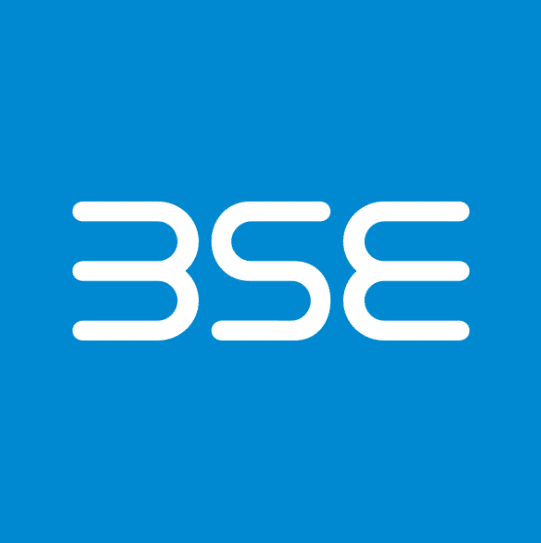In this article, we explore the BSE Business Model to explain and understand how the Business Model of BSE is structured and to learn about how BSE makes money.
Today, we are going to delve into the intricacies of the business model of the Bombay Stock Exchange (BSE), one of the world’s leading stock exchanges. We will use Alexander Osterwalder’s Business Model Canvas to dissect the various aspects of BSE’s operations, revenue streams, customer segments, and more. The BSE, founded in 1875, is the oldest and fastest stock exchange in Asia. With over 5,000 listed companies, the exchange boasts a significant impact on the global financial landscape. In this blog post, we will also acquaint you with BSE’s founders, their story, and the reasons behind the establishment of this influential financial institution.
The Genesis of BSE
To understand the business model of the BSE, it is essential to know its history and the motivation behind its founding. The BSE was initially established as ‘The Native Share & Stock Brokers Association’ in 1875 by Premchand Roychand, a leading Indian stockbroker and businessman. Roychand’s vision was to create an organized and efficient platform for trading securities in India, which was then under British colonial rule.
The need for a formal stock exchange arose due to the rapid growth of trading in Indian securities during the second half of the 19th century. The cotton and textile industries were thriving, and numerous joint-stock companies were being established. As a result, there was a growing demand for a centralized platform to facilitate efficient trading and price discovery. The BSE, as an organized platform, catered to this demand, ensuring transparency, standardization, and regulatory compliance in the securities market.
Business Model Canvas – an introduction
Before diving into the BSE business model, let’s briefly introduce Alexander Osterwalder’s Business Model Canvas. This strategic management tool is widely used to develop and document business models, and it breaks down a business into nine interconnected building blocks:
- Customer Segments
- Value Propositions
- Channels
- Customer Relationships
- Revenue Streams
- Key Resources
- Key Activities
- Key Partnerships
- Cost Structure
We will now apply the Business Model Canvas to analyze the BSE business model.
BSE Business Model Analysis
Customer Segments
The BSE serves a diverse range of customer segments, including:
- Listed Companies: Companies that have their securities listed and traded on the BSE.
- Investors: Retail and institutional investors who trade in the securities listed on the BSE.
- Brokers and Trading Members: Intermediaries who facilitate the trading of securities on the BSE.
- Market Data Consumers: Various entities, such as financial institutions, research firms, and media organizations, that consume market data generated by the BSE.
Value Propositions
The BSE offers a wide array of value propositions to its customers:
- Efficient Trading Platform: BSE’s electronic trading platform, BOLT (BSE On-Line Trading), allows for fast and efficient trading with minimal latency.
- Diverse Product Offerings: BSE provides a platform for trading equities, derivatives, currencies, debt instruments, mutual funds, and other securities.
- Price Discovery and Transparency: BSE ensures transparent price discovery by disseminating real-time market data to market participants.
- Regulatory Compliance and Investor Protection: BSE operates under the regulatory framework laid down by the Securities and Exchange Board of India (SEBI), ensuring the protection of investor interests and maintaining market integrity.
- Listing Services: BSE offers listing services to companies, allowing them to raise capital and enhance their visibility in the market. 6. Market Data Services: BSE generates and distributes valuable market data, enabling better decision-making for market participants and providing revenue opportunities for data consumers.
- Access to a Broad Investor Base: By listing on the BSE, companies gain access to a wide array of retail and institutional investors, both domestic and international.
- Indices and Benchmarking: BSE has developed various indices, such as the SENSEX, which serve as benchmarks for market performance and investment products.
Channels
BSE operates through a combination of physical and digital channels to deliver its value propositions:
- BOLT (BSE On-Line Trading) System: The electronic trading platform is the primary channel through which trading occurs on the BSE.
- BSE Website and Mobile Applications: These digital platforms provide access to market data, company information, and investor education resources.
- Trading Member Offices: Brokers and trading members facilitate transactions on the BSE through their offices and online platforms.
- BSE Institute Limited: This educational arm of the BSE offers courses and certifications in financial markets, catering to various stakeholders, including investors, professionals, and students.
Customer Relationships
BSE maintains strong relationships with its customers through:
- Personal Assistance: BSE provides support to listed companies, brokers, and trading members through dedicated relationship managers and helpdesks.
- Investor Services Cell: This division handles investor grievances and ensures investor protection.
- Regulatory Compliance: BSE works closely with SEBI to ensure that market participants adhere to the regulatory framework and maintain market integrity.
- Educational Initiatives: BSE conducts investor awareness programs, seminars, and workshops to educate market participants and strengthen customer relationships.
Revenue Streams
BSE generates revenue from various sources:
- Transaction Fees: BSE charges fees for every transaction executed on its platform.
- Listing Fees: Companies pay annual listing fees and one-time fees for initial public offerings (IPOs) and other corporate actions.
- Data Dissemination Fees: BSE charges fees for providing market data to data consumers.
- Membership Fees: Brokers and trading members pay annual membership fees for accessing BSE’s trading platform.
- Depository Services: BSE’s depository subsidiary, Central Depository Services Limited (CDSL), generates revenue from account maintenance, dematerialization, and other depository-related services.
- Training and Education: BSE Institute Limited generates revenue through fees for its courses and certifications.
Key Resources
BSE relies on several key resources to deliver its value propositions:
- Technological Infrastructure: BSE’s electronic trading platform, BOLT, and other IT systems are crucial for efficient and secure trading operations.
- Human Resources: BSE employs skilled professionals in various roles, including technology, compliance, marketing, and relationship management.
- Regulatory Framework: BSE’s ability to operate and maintain its credibility depends on its adherence to the regulatory framework laid down by SEBI.
- Market Data: BSE’s repository of historical and real-time market data is a valuable resource for decision-making and revenue generation.
Key Activities
BSE’s key activities revolve around maintaining its trading platform, ensuring regulatory compliance, and fostering market development:
- Trading Platform Management: BSE continuously upgrades and maintains its electronic trading platform to ensure efficient and secure operations.
- Regulatory Compliance: BSE works closely with SEBI to monitor market activities, enforce regulations, and maintain market integrity.
- Market Development: BSE actively promotes the development of the securities market through initiatives such as investor education programs, new product offerings, and collaborations with international exchanges.
Key Partnerships
BSE has established several key partnerships to expand its offerings, increase its global reach, and enhance its capabilities:
- International Exchanges: BSE has formed partnerships with other leading stock exchanges, such as Deutsche Boerse and London Stock Exchange, to facilitate cross-listing of securities and promote cooperation in areas like technology and product development.
- Financial Institutions: BSE partners with banks and other financial institutions to provide settlement and clearing services for its trading platform.
- Technology Providers: BSE collaborates with technology providers to develop and maintain its IT infrastructure, including its electronic trading platform and other systems.
- Regulatory Bodies: BSE works closely with SEBI and other regulatory bodies to ensure market integrity and investor protection.
- Educational Institutions: BSE partners with universities and other educational institutions to develop and deliver financial market courses and certifications.
Cost Structure
BSE’s cost structure comprises various expenses incurred in delivering its value propositions:
- Technology and Infrastructure: BSE incurs costs related to the development, maintenance, and upgrading of its electronic trading platform and other IT systems.
- Human Resources: BSE’s workforce represents a significant cost, including salaries, benefits, and training expenses.
- Regulatory Compliance: BSE incurs costs in ensuring adherence to the regulatory framework, including expenses related to monitoring, enforcement, and reporting.
- Marketing and Business Development: BSE invests in marketing and promotional activities to attract new customers, expand its product offerings, and develop the market.
- Operations and Administration: BSE incurs various operational and administrative costs, such as rent, utilities, and office expenses.
In conclusion, the Bombay Stock Exchange (BSE) has established itself as a leading financial institution in the global landscape, with a well-defined business model that caters to the needs of various stakeholders. By leveraging Alexander Osterwalder’s Business Model Canvas, we have gained valuable insights into BSE’s customer segments, value propositions, channels, customer relationships, revenue streams, key resources, key activities, key partnerships, and cost structure.
The BSE’s success can be attributed to its focus on providing an efficient and transparent trading platform, a diverse range of products, and robust regulatory compliance. Its key partnerships, technology infrastructure, and commitment to investor education have further solidified its position in the market. As the BSE continues to innovate and adapt to the evolving financial landscape, it remains well-positioned to maintain its status as a leading global stock exchange.
Did you know? Corporate teams like to use our coworking space in Bangalore.
Learn more about our coworking space on our YouTube channel Work Theater Studios where we talk about a variety of topics including personal finance, entrepreneurship, business and life.
Did you know? We also have a private theatre in Bangalore.




